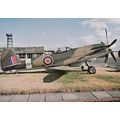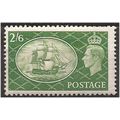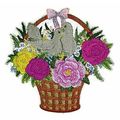Arnol, Isle of Lewis - Black House No 42 - postcard c.1970s
- Condition : Used
- Dispatch : 2 Days
- Brand : None
- ID# : 195472638
- Quantity : 1 item
- Views : 176
- Location : United Kingdom

- Seller : justthebook (+1703)
- Barcode : None
- Start : Thu 10 Sep 2020 09:11:08 (EDT)
- Close : Run Until Sold
- Remain : Run Until Sold
Checks/Cheques
 for 1 item(s) edit
for 1 item(s) edit
Shipping Calculator
More Listings from This Seller view all
Seller's Description
- Postcard
- Picture / Image: Black House No. 42, Arnol, Isle of Lewis [Outer Hebrides]
- Publisher: 'Crown Copyright' so some official body such as Ministry of Works or Scottish Historic Monuments etc
- Postally used: no
- Stamp: n/a
- Postmark(s): n/a
- Sent to: n/a
- Notes / condition:
Please ask if you need any other information and I will do the best I can to answer.
Image may be low res for illustrative purposes - if you need a higher definition image then please contact me and I may be able to send one. No cards have been trimmed (unless stated).
------------------------------------------------
Postage & Packing:
Postage and packing charge should be showing for your location (contact if not sure).
No additional charges for more than one postcard. You can buy as many postcards from me as you like and you will just pay the fee above once. Please wait for combined invoice. (If buying postcards with other things such as books, please contact or wait for invoice before paying).
Payment Methods:
UK - PayPal, Cheque (from UK bank) or postal order
Outside UK: PayPal ONLY (unless otherwise stated) please. NO non-UK currency checks or money orders (sorry).
NOTE: All postcards are sent in brand new stiffened envelopes which I have bought for the task. These are specially made to protect postcards and you may be able to re-use them. In addition there are other costs to sending so the above charge is not just for the stamp!
I will give a full refund if you are not fully satisfied with the postcard.
----------------------------------------------
Text from the free encyclopedia WIKIPEDIA may appear below to give a little background information (internal links may not work) :
*************
Arnol (Scottish Gaelic: Àrnol) is a small village typical of many settlements of the west coast of the Isle of Lewis, in the Outer Hebrides, Scotland. Arnol is within the parish of Barvas,[1] and is situated on the A858.[2]
Once a thriving township with over forty crofts, it now has a population of about 100 and supports a much lower number of active crofters. It is the location of the Blackhouse Museum, owned by Historic Environment Scotland
The township of Arnol has been moved at least three times in the last two hundred years with materials for buildings being robbed and re-used from earlier structures.[4] The early 19th century settlement was actually on the coast but later it was moved inland, closer to the main road. Few of the surviving buildings were lived in for more than 50 years and during that time many were considerably modified, extended and partially rebuilt.
Through the village the ruins of blackhouses can be seen everywhere. Very few are still roofed but their massive stone walls and ‘organic’ lines are very characteristic. The older ones have rounded ends and appear as a series of conjoined cells typically with a central living area/byre with a porch and barn on either side. The later ones can be identified by their gabled end walls and the presence of a stone dividing wall between living area and byre.
The museum at No. 42 is probably the best example of a blackhouse on Lewis having been in state care since the occupants moved out in the 1960s.[5] The building, complete with internal fittings, gives a very good impression of what it would have been like to live in a blackhouse. The central hearth is always kept lit and is essential to keep the roof dry and in good condition.
The visitor centre also includes the ruined blackhouse over the road at No. 39. This is one of the few blackhouses on Lewis that have been investigated archaeologically.[6] The excavation by Headland Archaeology revealed successive phases of occupation as the building was modified during the last century as estate owners tried to improve living standards. The earliest levels identified an open central hearth with no clear division between the living area and the byre. In later phases, floors were cobbled or flagged and a step was built to separate the areas occupied by humans and animals. The living area was leveled, probably to accommodate box beds and other furniture. Before the roof collapsed the building was used as a weaving shed as evidenced by the presence of a stone-built platform in the central room.
Listing Information
| Listing Type | Gallery Listing |
| Listing ID# | 195472638 |
| Start Time | Thu 10 Sep 2020 09:11:08 (EDT) |
| Close Time | Run Until Sold |
| Starting Bid | Fixed Price (no bidding) |
| Item Condition | Used |
| Bids | 0 |
| Views | 176 |
| Dispatch Time | 2 Days |
| Quantity | 1 |
| Location | United Kingdom |
| Auto Extend | No |















